Results 7,081 to 7,090 of 12089
Thread: Anandtech News
-
06-10-17, 11:32 AM #7081
Anandtech: QNAP Launches TS-1277 NAS Powered by AMD's Ryzen CPUs: 12 Bays, 64 GB DDR4
QNAP demonstrated its upcoming 12-bay NAS devices at Computex 2017, including most notably models powered by AMD’s Ryzen processors. The NAS will support HDDs and SSDs in various form-factors and will start at $2,299. In addition, the company is prepping 6-bay and 8-bay NAS featuring AMD’s Ryzen CPUs that will be more affordable.
The QNAP TS-1277 series NASes are powered by AMD’s Ryzen 7 1700 or Ryzen 5 1600 CPUs with eight and six cores respectively, and come with up to 64 GB of DDR4-2400 DRAM. All the systems use four GbE ports to connect to networks and have eight 3.5”/2.5” bays as well as four 2.5” bays for various SATA storage devices. As you'd expect for a NAS, there's a multitude of RAID options available, with the NAS hardware able to tap the large number of drives here for RAID 50/60 operation. In addition, the NASes feature two M.2 slots (up to M.2-22110) for SSDs that can cache frequently used data.
Meanwhile, the TS-1277 has one PCIe 3.0 x8 and two PCIe 3.0 x4 slots, and thus can be upgraded with QNAP's QM2 PCIe cards, which offer options such as 10GbE networking and additional M.2 slots. For those who needs to have access to the TS-1277 from a local PC or to a DAS, the NAS has two USB 3.1 ports (Type-A and Type-C) and five USB 3.0 headers (Type-A). As for power, the TS-1277 is equipped with a 550 W PSU and can handle all kinds of HDDs and SSDs (as long as they are compatible with SATA-6G and do not require management by the host) as well as almost any graphics card in the PCIe 3.0 x8 slot.
The 12-bay TS-1277 NAS will not be the only model based on AMD’s Ryzen CPUs from QNAP. Along the high-end SKU, QNAP will also introduce more affordable solutions featuring six and eight bays: the TS-677 and the TS-877 with 250 W and 450 W PSUs, respectively. As for feature set, all QNAP’s TS-x77 NAS will run the company’s QTS 4.3 OS and will support the same capabilities as other NAS from the manufacturer.
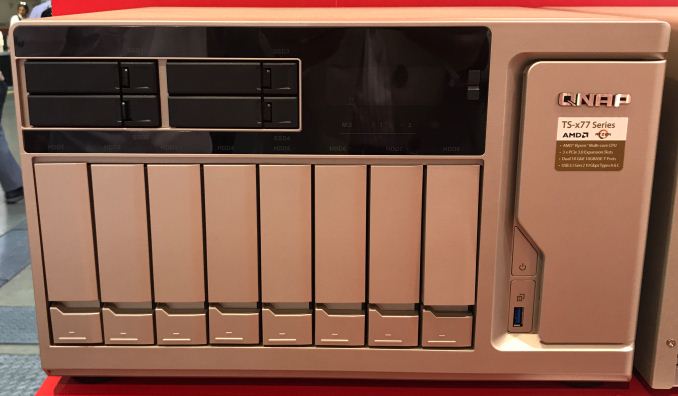
QNAP is the first NAS manufacturer to start using AMD’s Ryzen processors for network area storage. AMD’s CPUs traditionally have strong integer performance, making them a good fit for NAS tasks. Meanwhile, the high core counts of the Ryzen CPUs also enables QNAP to position their TS-1277/TS-877/TS-677 NASes for hosting virtual machines or containerized applications. During a conversation at Computex, QNAP also mentioned that the prices of AMD’s Ryzen processors (relative to its rivals) were also a major factor in their decision to use Ryzen CPUs for NASes.
Gallery: Overview of QNAP TS-x77 NAS with AMD Ryzen CPUsQNAP TS-1277, TS-877 and TS-677 Specifications TS-1277
1700-64GTS-1277
1700-32GTS-1277
1600-16GTS-877
1600-16GTS-877
1400-16GTS-677
1400-8GCPU AMD Ryzen 7 1700
8C/16T
3 GHz/3.7 GHz
20 MB Cache (L2: 4 MB, L3: 16 MB)
65W TDPAMD Ryzen 5 1600
6C/12T
3.2 GHz/3.6 GHz
19 MB Cache (L2: 3 MB, L3: 16 MB)
65W TDPAMD Ryzen 5 1400
4C/8T
3.2 GHz/3.4 GHz
10 MB Cache (L2: 2 MB, L3: 8 MB)
65W TDPEncryption Acceleration AES-NI Memory Speed DDR4-2400, dual-channel Capacity 64 GB (4×16 GB) 32 GB
(2×16 GB)16 GB
(2×8 GB)8 GB
(2×4 GB)Bays 8 × 3.5"
4 × 2.5"6 × 3.5"
2 × 2.5"4 × 3.5"
2 × 2.5"M.2 Slots 2×M.2 slots (up to M.2-22110) Storage interface SATA 6 Gbps Ethernet 4×GbE, 10/40 GbE supported via add-in-cards PCIe Slots 1 × PCIe 3.0 x8
2 × PCIe 3.0 x4Audio 2 speakers
1 × audio out
2 × audio inUSB 1 × USB 3.1 Type-A
5 × USB 3.0 Type-A
1 × USB 3.1 Type-COther I/O Monochrome backlit LCD display with Enter & Select buttons, 3.5 mm console port, voice allert, buzzer, etc. Dimensions Height 234.6 mm / 9.23" 231.9 mm / 9.13" Width 369.9 mm / 14.56" 292.8 mm / 11.53" 224.9mm/8.9" Depth 319.8 mm / 12.59" PSU 550 W 450 W 250 W OS QNAP QTS 4.3 MSRP $3099 $2599 $2299 $2099 $1899 $1649 





QNAP plans to start selling its AMD Ryzen-based 12-bay TS-1277 NAS in late July. The top-of-the-range model with a Ryzen 7 1700 and 64 GB of memory will cost $3,099, a slightly cheaper SKU with the same processor, but 32 GB of DDR4 will retail for $2,599, whereas the most affordable configuration powered by AMD’s six-core Ryzen 5 1600 will be available for $2,299.
Related Reading:
- QNAP at CES 2017 - Thunderbolt 3 and Xeon D NAS Units, Residential Gateways, and More
- Thecus Announces $130 and $200 Entry-Level NASes For Home Users
- Commercial NAS Operating Systems - Exploring Value-Additions - Part I
- Commercial NAS Operating Systems - A Comprehensive Overview of Core Features
- QNAP Expands Thunderbolt NAS / DAS Lineup with TVS-x82T Series
More...
-
06-11-17, 06:57 PM #7082
Anandtech: Microsoft’s Project Scorpio Get a Launch Date: Xbox One X, $499, November
Over the last several months, Microsoft has been trickling out details about their mid-generation hardware update for the Xbox One console, which has been going under the name Project Scorpio. Now at this year’s E3 conference, the company is releasing the final details. We now have a name, a launch date, and perhaps most importantly, a price.
Hitting the streets on November 7th will be the new Xbox One X, which is Microsoft’s retail name for the console.(ed: I’m convinced MS is trying to keep us from writing their console names in short-hand) It will be priced at $499 in the US and equivalent prices in other regions, which is the same price as the original Xbox One (with the Kinect) at its launch back in 2013. On a relative basis, this stacks up as being twice the cost of the Xbox One S, whose base model (and now bundles as well) has been $249 for a while now.
As far as the hardware itself goes, thanks to Microsoft’s ongoing campaign, we already know the bulk of the details of the console. The 16nm SoC at the heart of the new Xbox One design is meant to be significantly more powerful than the original and S versions of the Xbox One, vaulting MS from having the least powerful console to the most powerful console. All told, the Xbox One X will offer almost 4.3x the GPU compute throughput of the Xbox One S, while the Jaguar CPU cores have received a healthy 31% clockspeed boost. The memory feeding the beast has also gotten a great deal faster as well, with Microsoft switching out their 8GB of DDR3 for a large and very fast 12GB of GDDR5, which has a combined memory bandwidth of 326GB/sec.Microsoft Console Specification Comparison Xbox One (Original) Xbox One S Xbox One X CPU Cores/Threads 8/8 8/8 8/8 CPU Frequency 1.75 GHz 1.75 GHz 2.3 GHz CPU µArch AMD Jaguar AMD Jaguar "Custom CPU"
(AMD Jaguar Variant)Shared L2 Cache 2 x 2MB 2 x 2MB 2 x 2MB GPU Cores 16 CUs
768 SPs
853 MHz16 CUs
768 SPs
914 MHz40 CUs
2560 SPs
1172 MHzPeak Shader Throughput 1.23 TFLOPS 1.4 TFLOPS 6 TFLOPs Embedded Memory 32MB eSRAM 32MB eSRAM None Embedded Memory Bandwidth 204 GB/s 219 GB/s None System Memory 8GB DDR3-2133 8GB DDR3-2133 12GB GDDR5
(6.8 Gbps)System Memory Bus 256-bits 256-bits 384-bit System Memory Bandwidth 68.3 GB/s 68.3 GB/s 326 GB/s Manufacturing Process TSMC 28nm TSMC 16nm TSMC 16nm Dimensions 343mm x 263mm x 80mm 295mm x 230mm x 65mm 300mm x 240mm x 60mm Weight 3.54kg 2.9kg 3.81kg PSU 245W
(Internal)120W
(Internal)220W
(External)Optical Drive Blu-Ray UHD Blu-Ray UHD Blu-Ray Wireless 2x2 802.11ac 2x2 802.11ac 802.11n (Dual Band) Launch Price $499 w/Kinect $299 $499 Launch Date 11/23/2013 08/02/2016 11/07/2017
Meanwhile the only real details we didn’t have on the console itself, such as the size, have been answered. Microsoft is going for a super slim design on the console, announcing that it’s the “smallest Xbox ever”, placing it below even the already slimmed-down Xbox One S. At 300mm x 240mm x 60mm, the console is 5mm wider and 10mm deeper than the Xbox One S, but it's 5mm shorter than said console. Or to put things in terms of volume, it's 98% the volume of the Xbox One S, indeed making it smaller, though just slightly so.
Otherwise, Microsoft has largely confirmed that the Xbox One X will function as you’d expect as a mid-cycle console upgrade, similar to the Xbox One S. Existing games will benefit from the more powerful hardware, though to what degree is apparently going to depend on the game. For games that are fully Xbox One X enabled, Microsoft is targeting a 4K (3840x2160) resolution, and will offer downsampling for improved quality when hooked up to 1080p TVs. And all of the existing Xbox One ecosystem accessories will work as well.
More...
-
06-12-17, 07:41 AM #7083
Anandtech: Mushkin Announces Availability Of SATA SSDs With 3D NAND
As previewed early this year at CES, Mushkin is now launching their first SSDs using 3D NAND flash. The new Reactor ARMOR3D is the replacement for the successful Mushkin Reactor, which held on to its position as one of the most aggressively priced MLC SATA SSDs as the mainstream segment of the market migrated almost entirely to using TLC NAND flash. The value-oriented Mushkin Triactor hasn't been around for quite as long as the Reactor but it too is being upgraded, to use 3D TLC NAND.
The new Mushkin drives continue the pattern of using Silicon Motion SSD controllers, with both new models incorporating the current SM2258 controller. The 3D MLC and 3D TLC NAND comes from Micron, the first flash manufacturer to provide 3D NAND in volume for independent drive manufacturers (Samsung has largely been keeping their 3D NAND for their own SSDs, and the rest are still ramping up production capacity). Both models use the first-generation 32-layer 3D floating gate NAND flash, not the upcoming 64-layer 3D NAND.
The major hardware components of the new Mushkin SSDs make them broadly similar to the ADATA SU800, SU900 and XPG SX950 SATA SSDs, all based on the SM2258 controller and Micron 3D NAND. There may be minor firmware differences between ADATA and Mushkin's offerings and they don't exactly match on overprovisioning ratios and usable capacity, but performance should be broadly similar between drives using the same NAND and similar capacity.
Mushkin has not announced MSRPs, but the usual online retailers should have these drives in stock soon with competitive pricing.
Mushkin is initially offering a narrower range of capacities than ADATA, with 240–960GB for the Reactor ARMOR3D, and 512GB and 1TB for the Triactor 3D. Larger capacities are likely to be introduced when NAND prices get back down to reasonable levels, but that may not happen until it's time to move to 64-layer 3D NAND. Mushkin is offering three-year warranties on both new models. ADATA's 3D MLC SATA SSDs come with five and six year warranties, so Mushkin will have to beat them on price.Mushkin Reactor ARMOR3D and Triactor 3D SSDs Capacity Reactor ARMOR3D Triactor 3D Capacities 240 GB – 960 GB 512 GB, 1 TB Controller Silicon Motion SM2258 NAND Flash Micron 3D MLC NAND Micron 3D TLC NAND Form Factor 2.5" 7mm SATA Sequential Read Up to 565 MB/s Sequential Write Up to 510 MB/s Up to 525 MB/s Random Read IOPS Up to 80k IOPS Random Write IOPS Up to 80k IOPS Up to 82k IOPS Pseudo-SLC Caching Supported DRAM Buffer Yes TCG Opal Encryption No Power Management DevSleep Warranty 3 years MTBF 1,500,000 hours
Mushkin also has their first NVMe SSD in the pipeline. The upcoming Mushkin Helix will pair the Silicon Motion SM2260 controller with Micron 3D MLC NAND, and like these new SATA drives its closest competition will be another ADATA drive, the ADATA SX8000.
More...
-
06-12-17, 09:17 AM #7084
Anandtech: Samsung Announces First Freesync 2 Monitors: CHG70 & CHG90 - Quantum Dots,
Samsung on Friday announced the C49HG90 monitor, their new flagship gaming monitor that includes virtually all of the major gaming-oriented display technologies available today. The new 49” screen has a an ultra-wide 32:9 aspect ratio, a 144 Hz refresh rate, and uses quantum dot nanocrystals to enable support for DCI-P3 color gamut, and, perhaps most importantly, it supports AMD’s forthcoming FreeSync 2 technology. In addition, Samsung introduced its CHG70-series displays that will support the same technologies, but will be smaller and more affordable.
The Samsung C49HG90 is the company’s first ultra-wide display with the 32:9 aspect ratio and the so-called double full HD (DFHD) resolution (3840×1080). The monitor is based on a VA panel with up to 600 nits brightness, 1 ms moving picture response time (MPRT) as well as a 144 Hz refresh rate, two features important for fast-moving games. The panel has 1800R curvature along with 178° viewing angles to make gaming experience more immersive. The smaller C32HG70 and C27HG70 monitors use 32” and 27” curved VA panels (respectively) with a 2560×1440 resolution as well as the same refresh rate and MPRT as on the flagship model.
Large dimensions, curvature and a high refresh rate are not the only distinctive features of Samsung’s new breed of gaming displays. The C49HG90 features LED backlighting enhanced with quantum dots that enable support for the DCI-P3 color space (as well as larger-than-sRGB gamut) and the HDR-focused AMD’s FreeSync 2. Samsung claims that the QLED backlighting of the display is similar to that used in its high-end UHDTVs with HDR, but does not say anything about features like local dimming or formal support for the HDR10 spec. Keeping in mind that Samsung’s announcement is focused around games and FreeSync 2 (and the latter uses its own HDR transport) the status of the HDR10 support isn't known at this time.
Meanwhile, Samsung’s HDR implementation makes the CHG70- and the CHG90-series displays the first to support AMD’s FreeSync 2, which is something bigger than just a new dynamic refresh rate technology (as discussed in the appropriate article). The FreeSync 2 mandates support for Low Framerate Compensation – an optional feature for FreeSync 1 monitors – but the biggest shift from a feature perspective is how HDR works. Rather than double-tone mapping the dynamic range – tone mapping a game once from its rendering space to HDR10's space, and then again in the monitor from HDR10 to the monitor's native space – FreeSync 2 skips the middle-man by having games tone map directly to a monitor's native dynamic range. This saves potentially precious milliseconds both by removing a step, and by putting the extremely fast GPU in charge of the process instead of the historically inconsistent display processors inside monitors.
As this is the first FreeSync 2-related news to hit the scene in nearly 5 months, there are some remaining questions that at least as of Samsung's announcement have not yet been answered. Chiefly, when AMD will enable FreeSync 2 support on their end, as all of the heavy lifting is being done by AMD's drivers. Coupled with that is a need for FreeSync 2-enabled software – since devs need to code for it – so that there's something to use with the display. Samsung says that it had collaborated with DICE and Ghost Games to enable HDR in the upcoming Star Wars Battlefront II and Need for Speed Payback games, which may indicate that these two titles will be among the first to support AMD’s FreeSync 2.
Samsung plans to demonstrate its CHG70- and the CHG90-series monitors in action at the Ubisoft booth at the E3 convention this week, just a couple of weeks before the devices will hit the market. This in turn implies that this Ubisoft is also set to support AMD’s FreeSync 2 (good news for the GPU developer) in at least some of its titles, but this is a speculation for now.Samsung CHG70 and CHG90 QLED Gaming Monitors with AMD FreeSync 2 C49HG90
LC49HG90DMNXZAC27HG70 C32HG70 Panel 49" VA 27" VA 31.5" VA Native Resolution 3840 × 1080 2560 × 1440 Maximum Refresh Rate 144 Hz Response Time 1 ms MPRT Brightness 600 cd/m² Contrast 5000:1? Backlighting LED w/Quantum Dots Viewing Angles 178°/178° horizontal/vertical Curvature 1800R Aspect Ratio 32:9 (3.56:1) 16:9 Color Gamut 95% DCI-P3 Dynamic Refresh Rate Tech AMD FreeSync 2 Pixel Pitch 0.312 mm² 0.2335 mm² 0.2767 mm² Pixel Density 81.41 PPI 108.8 PPI 91.79 PPI Inputs 1 × DP
1 × mDP
2 × HDMI1 × DP
2 × HDMIAudio 3.5 mm input and output USB Hub 2 × USB 3.0 Type-A connectors
1 × USB 3.0 Type-B inputMSRP $1499 $699 $599
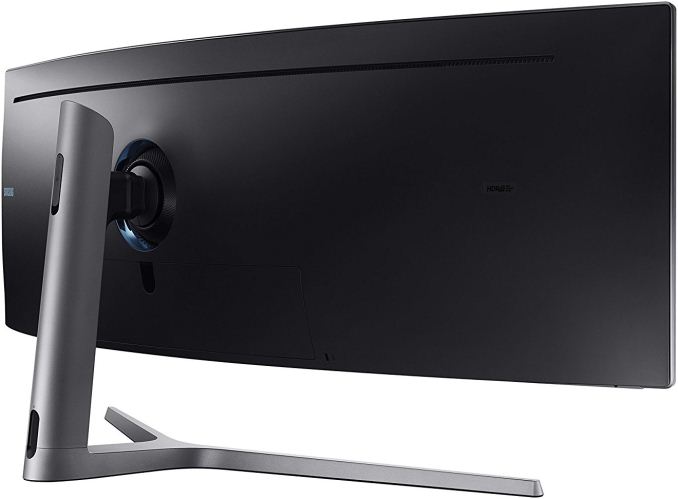
While the C27HG70 and C32HG70 look like rather regular gaming displays with a high refresh rate and FreeSync 2, HDR and DCI-P3 support as important bonuses, the C49HG90 seems like an experimental model that will compete against multi-monitor setups. Consumer displays with the 21:9 aspect ratio have been available for several years now and are gaining traction, but so far, no monitor manufacturer has attempted to offer a very large monitor with the 32:9 aspect ratio and a relatively low DPI. People buying the C49HG90 will not be able to watch 4K content on them in native resolution and that may stop some gamers from adopting it. On the other hand, those who use multi-display setups for ultra-wide screen gaming today do not necessarily enjoy 4K video anyway.
The Samsung C49HG90 will be available in late June at a price of $1499. The monitor is now available for pre-order at Amazon and Micro Center in the U.S. The 32” C32HG70 will cost $699 and is available for pre-order at Newegg, whereas the 27” C27HG70 will be priced at $599 and can be pre-ordered from Samsung now.
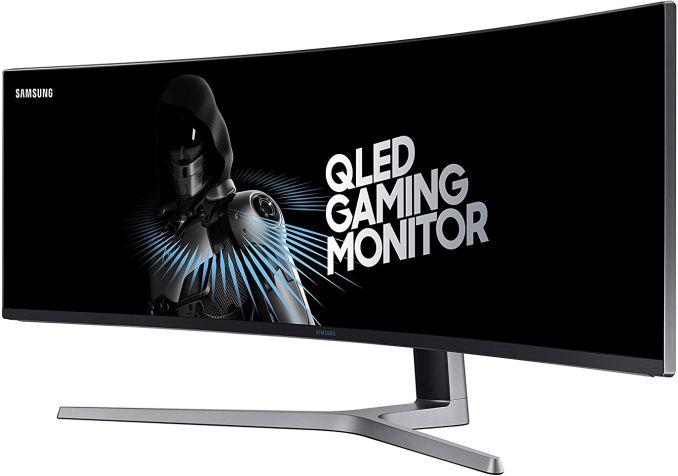
Gallery: The Samsung C49HG90 Display





Related Reading:
- Samsung Investing in 3840x1080 and 3840x1200 Curved Displays at 144 Hz
- Samsung CFG70: Curved 144Hz Displays with Quantum Dot Backlighting and AMD FreeSync
- Acer Announces Predator X27 Monitor: 4K@144 Hz with DCI-P3, HDR10, & G-Sync
- ASUS Demonstrates ROG Swift PG27UQ: 4K, 144 Hz, HDR, DCI-P3 and G-Sync
- ASUS Announces Designo Curve MX38VQ: 37.5 Inch Curved Display with Qi Charging
- LG 38UC99 Announced: 37.5-Inch Curved 21:9 Display with 3840×1600 Resolution
More...
-
06-13-17, 02:54 AM #7085
Anandtech: Alienware Area-51 Threadripper Edition Announced at E3, Available for Orde
Alienware this evening has announced their new Area-51 Threadripper Edition desktop at E3. The high-end gaming desktop offers up to a heady 16-core/32-thread AMD Ryzen Threadripper processor – marking AMD's first OEM win for the HEDT processor – paired with a customized CPU liquid cooling system. In addition, Alienware has revealed that they will be “the exclusive OEM launch partner to deliver AMD Ryzen Threadripper pre-built systems to market”, which can be a bit confusing, but as later confirmed by PCWorld, is solely about a temporary exclusive among the OEMs. Alienware's exclusive deal won't impact stand-alone CPUs for enthusiasts.
The custom Triad Chassis fits three graphics cards, nicely complementing Ryzen ThreadRipper’s 60+4 PCIe 3.0 lanes and X399 chipset, and the GPU options top out at dual Nvidia GeForce GTX 1080 Ti’s or triple AMD Radeon RX 580s. To run this gamut of cards, PSU options range from 850W 80+ Bronze to 1500W 80+ Platinum. And not one to be ever out-done on bling, Alienware has made sure the chassis has AlienFX Lighting for any and all LED needs.
The TR4 socket Ryzen ThreadRippers will come with an all-core factory overclock and will be available as a 12-core/24-thread variant. Memory options top out at 64GB of 2933 MHz quad-channel DDR4 RAM, while storage offerings go up to 1TB M.2 SSDs and 2TB HDDs. Connectivity-wise, two USB 3.1 Gen-1 Type-A ports, media card reader, headphone jack, and microphone jack is included in the front, while the rear includes ports for dual Killer Networks E2500 Gigabit Ethernet as well as “10 USB ports of different form factors, including a Type-C port”.Alienware Area-51 Threadripper Edition Processor AMD Ryzen Threadripper (Up to 16C/32T) Memory Up To 64 GB 2933 MHz DDR4 (4x DIMM) Graphics Up to 2 x Nvidia GeForce GTX 1080 Ti in SLI or
Up to 3 x AMD Radeon RX 580 in CrossfireStorage HDD: Up to 2TB
SSD (M.2 PCIe): Up to 1TBWireless Dell 1820 802.11ac 2x2 or
Killer 1535 802.11ac 2x2 Wi-FiFront 2x USB 3.1 Gen 1 Type-A
Optical Drive
Headphone Jack
Microphone Jack
Media Card ReaderRear 10 USB ports (unspecified form-factors)
Includes 1 USB Type-C (w/ 15W Powershare)
Dual Killer Networks E2500 Gigabit NICs
SPDIF Port
5 1/8" Audio JacksDimensions 569 x 638 x 272 mm Weight Starting at 28kg Pricing TBA
Positioning the Area-51 Threadripper Edition and its 6/8/10/12-core Intel Skylake-X counterpart for “4K, 8K, or VR applications" as well as "megatasking”, Alienware is offering demo rigs to visitors at E3 to experience the system first-hand. They will probably be as heavy as they look: the starting weight for these pre-builts is roughly 62 pounds.
Wrapping things up, Alienware's Area-51 Threadripper Edition will be available for pre-order on July 27. However pricing has not been announced at this time, and more importantly, neither has a shipping date. AMD has not yet unveiled ThreadRipper's release date, so all we know for sure by now is that it won't be any sooner than July 27th, and may very well be later. Meanwhile Area-51 models with Intel's Skylake-X family of CPUs will be available on August 22.
More...
-
06-13-17, 05:05 AM #7086
Anandtech: Intel Announces X299, Skylake-X, and Kaby Lake-X Release Schedule: Pre-Ord
At Computex a couple of weeks ago, Intel announced its new Basin Falls platform, consisting of the X299 chipset with motherboards based on it, a pair of Kaby Lake-X processors, and a set of Skylake-X processors going all the way up to eighteen cores, denoting the first use of Intel’s enterprise level high core-count silicon in a consumer product. For the most part, we had assumed that the news was just that, and following traditional Intel strategy they would not officially give a launch date until the reviews go live sometime later. So imagine our surprise when Intel starts announcing dates at the E3 show this week.
As part of Intel’s E3 press release, as well as their presentations at the show, the new Core i9 processors were discussed, along with Intel’s continued commitment towards eSports. Intel gave the dates for the new platform as the following:
- 4, 6, 8 and 10-core parts available for pre-order from June 19th
- 4, 6, 8 and 10-core parts shipping to consumers from June 26th
- 12-core parts expected to ship in August
- 14, 16 and 18 core parts expected to ship in October
This means that the following five processors will be available from June 26th:
The two quad-core parts are part of the Kaby Lake-X family, essentially using the mainstream Kaby Lake-S silicon but disabling the integrated graphics and expanding the voltage/frequency window and TDP limit to give extra frequency. As already demonstrated, extreme overclockers have hit over 7.5 GHz on these chips at a special Computex Intel event using Liquid Helium, with positive words coming out about 24/7 overclocking capabilities on air and water.Intel Basin Falls X299 Processors, June 26th i5-7640X i5-7740X i7-7800X i7-7820X i9-7900X Cores 4C/4T 4C/8T 6C/12T 8C/16T 10C/20T Base Clock 4.0 GHz 4.3 GHz 3.5 GHz 3.6 GHz 3.3 GHz Turbo Clock 4.2 GHz 4.5 GHz 4.0 GHz 4.3 GHz 4.3 GHz TurboMax Clock N/AN/AN/A 4.5 GHz 4.5 GHz L3 6 MB 8 MB 8.25 MB 11 MB 13.75 MB PCIe Lanes 16 28 44 Memory Channels 2 4 Memory Freq DDR4-2666 DDR4-2400 DDR4-2666 TDP 112 W 140 W Price (1k tray) $242 $339 $389 $599 $999
The other three parts are the Skylake-X family, with the 6, 8 and 10-core variants all coming from the same harvested low-core-count die. The big upswing for these processors is the rearranged cache arrangement, with Intel moving from 256KB of L2 cache on the previous generation to 1MB of L2 cache on Skylake-X (and changing the L3 cache from being a fully inclusive cache to being a non-inclusive cache). This significantly enhances software which is L2 cache size sensitive, although it remains to be seen how much of an effect it will have for consumers.
For the other parts, 12 core and up, Intel is staggering their launch to the extent that we do not even know many of the details. Intel's own documents list them all as TBD for frequency, power and DRAM support – the only certainties are core counts, pricing, and the fact that they will use the same socket as the above five processors. The August shipping date for the 12-core will be interesting, given that Dell has announced that pre-orders for its ThreadRipper Alienware desktops start on July 27th. The same announcement from Dell states 'and the Area 51 featuring Intel Core X-Series will arrive on August 22nd, and the product page states that this includes the 12-core option, as well as 6-10 cores. Whether the wording 'arrive' means pre-order or release we do not know, although the TR version explicitly states 'pre-order'. Ryan points out that this could just mean the 6-10 core options, as it doesn't explicitly state the 12 core and Intel hasn't made a firm date themselves yet.
Further Reading- Intel Announces Basin Falls: The New High-End Desktop Platform and X299 Chipset
- Intel Announces Kaby Lake-X Processors
- Intel Announces Skylake-X: Bringing 18-Core HCC Silicon to Consumers for $1999
More...
-
06-13-17, 08:34 AM #7087
Anandtech: Razer Launches The Thresher Ultimate: A Xbox, PS4, And PC 7.1 Headset
This morning at E3, Razer is announcing a new product in their lineup, targeting the console market, with the Thresher Ultimate wireless headset. This is a 7.1 Dolby surround gaming headset, offering several features to help it in the console market, but still working with PC gaming.
They will be offering versions for both the PS4 and the Xbox gaming systems, with a color scheme to match those consoles trademark colors. The PS4 version will offer blue accents, and the Xbox version will be Xbox green, and both can also be hooked to a PC through standard audio cables.
One of the main differences between the Thresher Ultimate and other Razer headsets focused on the PC is the charging stand, which also provides a more powerful 2.4 wireless signal to provide a connection range of up to 40 feet, which should help with the typical console gamer sitting further away. Razer’s PC based wireless headsets charge over a USB cable, and only offer a small wireless USB adapter and would not be able to get this kind of range.
The headphones have 50 mm drivers, and are available with cooling-gel infused ear cushions to help with comfort on longer gaming sessions. Razer rates the drivers for 12 Hz to 28 kHz, and combined with the Dolby Headphone technology, these should deliver good sound quality for a wireless headset. The headset weighs in at 408 grams / 0.89 lbs, and the unidirectional boom mic is fully retractable into the ear cup when its not needed. Razer estimates the battery life to be up to 16 hours, with a 4 hour charging time.
Although these are targeted to console gamers, the charging stand is something that any PC gamer would appreciate as well, since it makes the process of storing the headphones and keeping them charged much easier than Razer’s other headsets that use micro USB connectors for charging, although these do offer that connection for charging as well.
The Thresher Ultimate is available for pre-order now for $249.99 USD, and will be available worldwide in July.
Source: Razer
More...
-
06-13-17, 10:50 AM #7088
Anandtech: ADATA Demos A2 microSD Card with 4K/2K IOPS Minimum, Mulls Late 2017 Launc
ADATA displayed its first microSD card that is compliant with the App Performance 2 (A2) specification introduced earlier this year at Computex. The company is mulling to release the card later this year, but this depends on availability of hosts that support features mandated by the A2.
ADATA’s lineup of A2-compliant Premier microSD cards will include 32 GB, 64 GB, and 128 GB models. The new cards will use the UHS-I bus with up to 104 MB/s sequential read/write speed, so do not expect extreme performance numbers from such devices. In accordance with the A2 requirements, the cards provide a random performance of at least 2000 write IOPS, at least 4000 read IOPS as well as sustained sequential read/write speed at 10 MB/s (which is why the cards also carry the V10 badge).
However, guaranteed minimum performance figures are not the only requirements of the A2. All cards carrying the A2 label are mandated to support such functions as command queuing (with a minimum depth que of 2 and a maximum depth que of 32) to optimize random read performance, caching to hit write performance targets, as well as 'self-maintenance' features and low-voltage signaling (LVS). To support all the additional A2 functionality, the new SD cards need appropriate controllers and support from hosts. As you can likely guess, ADATA does not disclose supplier of its controllers, but the fact that the company is showing the card indicates that at least some suppliers are already sampling appropriate ICs.
For example, Silicon Motion is sampling its SD 6.0-compliant SM2705EN and SM2707EN controllers that support command queuing, caching, self-maintenance and low-voltage signaling (LVS). The aforementioned controllers are compatible with 3D MLC/3D TLC memory and feature Silicon Motion's DuoECC engine with improved data correct ability (given the application, it is logical to assume that we are dealing with a BCH-based ECC, but we have not confirmed that).Preliminary Specs of ADATA Premier A2-Compliant microSD Cards 32 GB 64 GB 128 GB Form-Factor MicroSDHC/SDXC NAND Type unknown Read Speed Up to 104 MB/s Write Speed Up to 104 MB/s Random Read IOPS Minimum 4000 Random Write IOPS Minimum 2000 Sustained Sequential Read/Write Speed 10 MB/s Interface UHS-I Availability Late 2017 - Early 2018 SDA Labels UHS-I, A2, LV, Class 10, U1, V10
Besides controllers, A2-compliant SD cards have to be supported by hosts and this is concern for hardware makers (including ADATA and SMI). In particular, command queuing and caching features have to be supported by hosts and currently there are no hosts that support CQ and caching for SD cards.
ADATA is currently planning to release the Premier microSDHC/SDXC UHS-I CL10 V10 A2 LV cards either late in 2017 or in early 2018, depending on various factors, including support by hosts. Pricing is something that the company will determine closer to the launch.
Related Reading:
- SD Association Announces UHS-III (up to 624 MB/s), A2 Class, LV Signaling
- ADATA Launches Premier ONE UHS-II SD Cards: 3D MLC, Up to 290 MB/s, V90 Labels
- ADATA Demonstrates 256 GB microSDXC Card
- Patriot Introduces LX 256 GB microSDXC Card with Class 10, U3 Certifications
- The SD Card Association to Classify IOPS Performance of Memory Cards via Logo
- SD Association Announces SD 5.0 Specification: SD Cards For UHD and 360° Video Capture
More...
-
06-13-17, 12:51 PM #7089
Anandtech: Acer Predator 21 X Laptop with Curved Display Now Available, Only 300 to B
Acer amazed the world last September when it announced a laptop with a 21” curved display, a quad-core Intel Core i7 “Kaby Lake” CPU with an unlocked multiplier, two graphics processors, a mechanical keyboard, and other features of a desktop PC. Then the company surprised once again, when it disclosed pricing of the Predator 21X in early January: at $8999, the machine is one of the most expensive gaming notebooks ever. By now, the PC is available, but this Predator will be a rare beast because only 300 will be made.
The final version of the Predator 21 X notebook got Intel’s quad-core Core i7-7820HK CPU with an unlocked multiplier and overclocking capabilities, two GeForce GTX 1080 GPUs with 16 GB of GDDR5 memor, as well as 64 GB of DDR4 RAM — specifications that even few gaming desktops can match. The storage sub-system of the Predator 21 X also resembles that of an SFF or AIO desktop: the machine can fit in four M.2 SSDs (NVMe or SATA) and one 2.5” hard drive. Acer ships the system with two 512 GB PCIe NVMe SSDs working in RAID 0 as well as one 1 TB 7200 RPM HGST HDD, but the system is upgradeable and owners can install almost whatever they want eventually.
They key selling point of the Predator 21 X is its curved 21” IPS display panel with a 2560×1080 resolution, a 120 Hz refresh rate, and NVIDIA’s G-Sync dynamic refresh rate technology. After trying out the Predator 21 X at Computex, I cannot say that curvature on a monitor of this size is any more immersive to me, but it may work in a very dark room. In addition to curvature, the notebook also has Tobii infrared eye-tracking sensors, which opens up different user experiences in games that support the appropriate tech. Meanwhile the audio sub-system is also worth mentioning as it has four integrated speakers and two built-in subwoofers.
As one would expect from a laptop that is 2.71” – 3.3” (68.8 mm – 83.82 mm) thick and weighs 18.74 lbs (8.5 kilograms), the Predator 21 X has all the connectivity that one might ever need (just like high-end desktops), including 2×2 802.11ac + Bluetooth Wi-Fi module, a Gigabit Ethernet port, one Thunderbolt 3 (USB Type-C) port, four USB 3.0 Type-A connectors, an HDMI 2.0 output, two DisplayPort 1.4 headers, and an SD card reader. For input, the Acer Predator 21 X uses a mechanical keyboard with Cherry MX switches with five programmable buttons. The numeric keypad does not have mechanical switches, but it can be flipped and turned into a touchpad.Acer Predator 21 X GX21-71-76ZF Display Size 21" Type 21" curved IPS Resolution 2560×1080 Refresh Rate 120 Hz CPU Core i7-7820HK (4C/8T, 8 MB, 2.9/3.9GHz) Graphics NVIDIA GeForce GTX 1080 in SLI with G-Sync support RAM 64 GB DDR4 Storage M.2 4 slots, two 512 GB SSDs with PCIe 3.0 x4 interface in RAID 0 installed 2.5" 1 bay, 1 TB HDD installed Wi-Fi 2×2 802.11ac Wi-Fi Bluetooth Bluetooth 4.x Ethernet GbE USB 4 × USB 3.0 Type-A (one supports charging)Thunderbolt 1 × USB Type-C Thunderbolt 3 connectorDisplay Outputs 2 × DisplayPort 1.41× HDMI 2.0bKeyboard Mechanical backlit keyboard with programmable keys Other I/O Microphone, stereo speakers, audio jacks, webcam, Tobii eye tracking Dimensions Width 22.4" | 56.9 cm Depth 12.4" | 31.5 cm Thickness 2.71” – 3.3” | 68.8 mm – 83.82 mm Battery Li-ion, 6000 mAh Weight 18.74 lbs (8.5 kilograms) Price $8999 in the U.S.
From performance point of view, the Predator 21 X has rivals from ASUS and MSI, but when it comes to its curved 21”/120 Hz display panel, it does not really have direct competitors (except desktops, of course). Meanwhile, the panel itself is custom, which adds to the cost of an already expensive machine. After considering performance, dimensions and price, Acer figured out that demand for a laptop that is priced at $8999 will be limited, and instead of trying to reduce the price tag, decided to make an ultra-exclusive product out of its Predator 21 X. The company will only produce 300 of such machines (referring to 300 Spartans?), each of which will have an individual number. The Acer Predator 21 X will ship in a Pelican-style case that can be “repurposed” and actually be used as a luggage.

Despite the price and dimensions, the Predator 21 X is sold out at Amazon.com in the U.S., but is still available from Micro Center and Newegg.
Related Reading:
- Acer Announces Predator Triton 700 Gaming Laptop: Core i7, GeForce GTX 10 Series, & 1 TB SSD
- Acer Announces The Acer Predator 21 X: 21-Inch Curved Screen Gaming Notebook
- Acer Predator 21 X: Notebook with Curved Display, Kaby Lake and GeForce GTX 1080 SLI
More...
-
06-13-17, 06:15 PM #7090
Anandtech: NVIDIA Announces Destiny 2 Bundle for GeForce GTX 1080 & 1080 Ti Cards
NVIDIA has announced yet another game bundle, this time pairing Bungie’s much-anticipated Destiny 2 with NVIDIA’s highly performant GeForce GTX 1080 and 1080 Ti. Systems (including NVIDIA’s own GeForce GTX Battlebox) and laptops containing these cards will also qualify for the bundle. The bundle includes both Destiny 2 and early PC beta access, which is tentatively scheduled for late August.
Unlike its predecessor, Destiny 2 will be available for PCs, and will launch on October 24th for PCs and September 6th for consoles. NVIDIA has already released Destiny 2 PC gameplay video at 4K and 60 FPS, hinting at how higher-end graphics cards can take advantage of what Destiny 2 graphically has to offer. In more concrete terms, Destiny 2 on PC will offer up to 4K resolution and uncapped framerate, as well as adjustable field-of-view and support for ultra-wide/special monitor configurations. As a massively multiplayer online sci-fi first-person shooter, which Bungie previously described as a “shared world shooter”, the PC version of the game will only be available via Blizzard App/Battle.net.
With the Rocket League bundle still in play until July 31st, NVIDIA nicely covers the GeForce GTX 10-series line-up from the humble GTX 1050 up to the GTX 1080 Ti, with the sole exception of the GTX 1070.
Overall this will be a very short lived bundle. NVIDIA is only running it for the next two weeks – from today through June 27th – presumbly as an E3 tie-in. Once redeemed, Destiny 2 Early Beta Access codes can only be used through the life of the beta, whereas “Destiny 2 game codes may only be redeemed until 30 days after PC launch date.”NVIDIA Current Game Bundles Video Card
(incl. systems and laptops)Bundle GeForce GTX 1080Ti/1080 Destiny 2 Bundle w/ Early Beta Access GeForce GTX 1070 None GeForce GTX 1060/1050Ti/1050 Rocket League Bundle
Codes must be redeemed through GeForce Experience. Be sure to verify the participation of any vendors purchased from as NVIDIA likely will not give codes for purchases made from sellers that are not participating.
More...
Thread Information
Users Browsing this Thread
There are currently 5 users browsing this thread. (0 members and 5 guests)




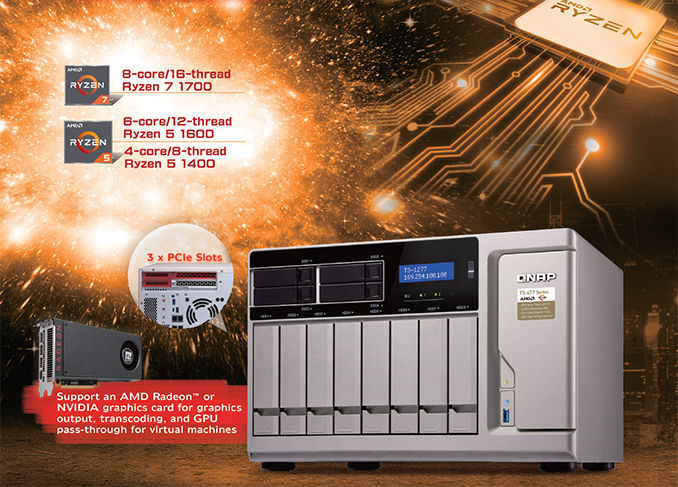
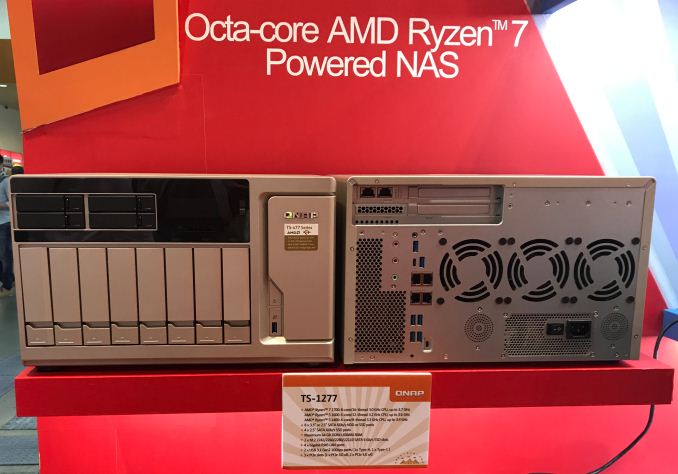
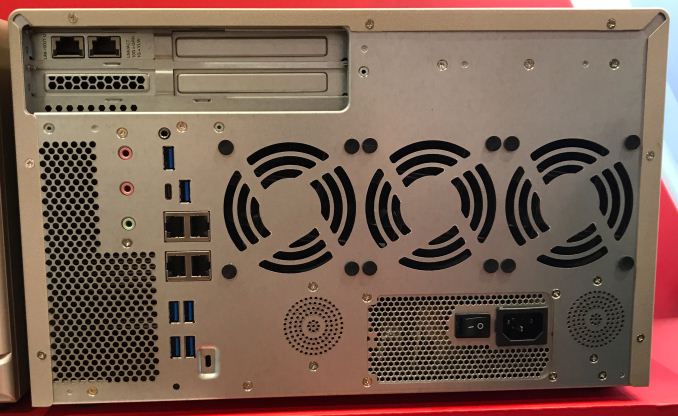

 Quote
Quote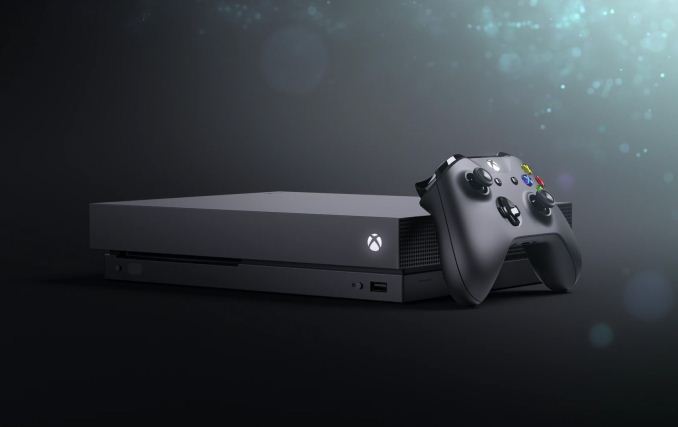
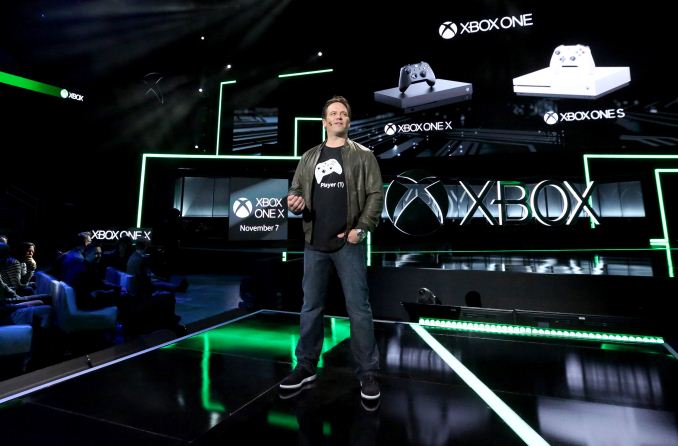
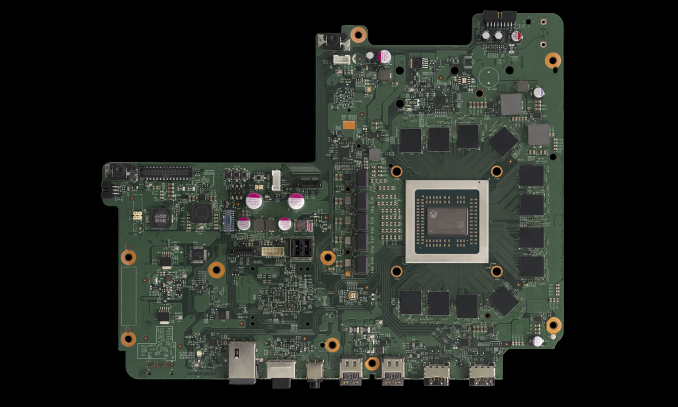

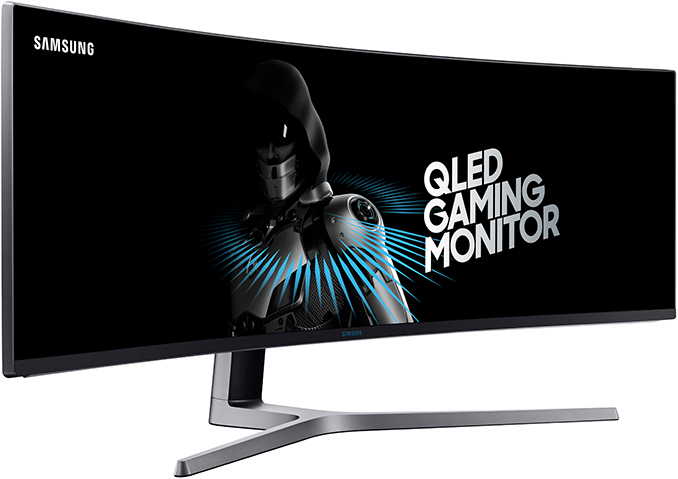
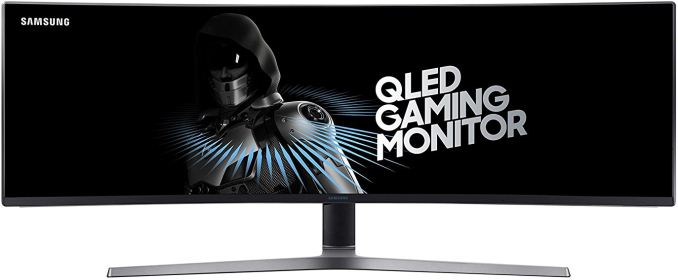
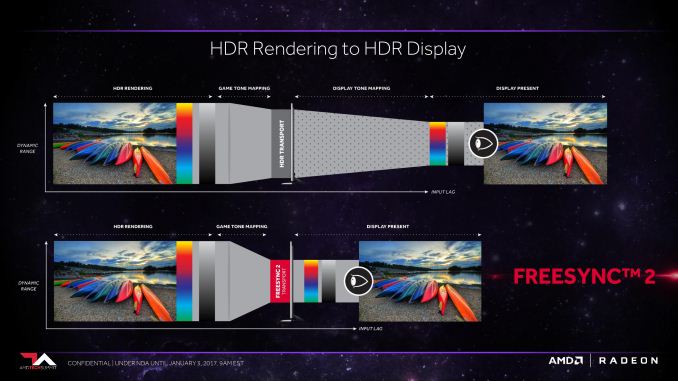
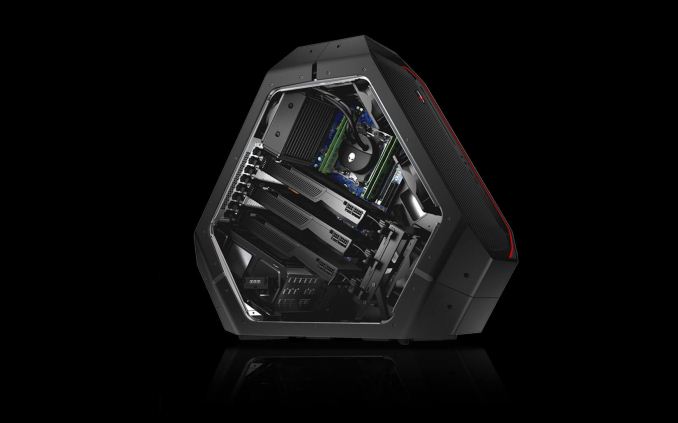


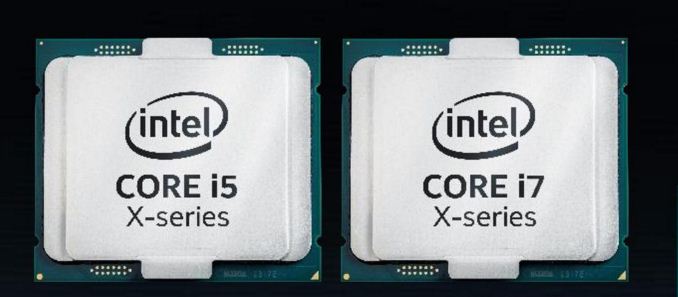
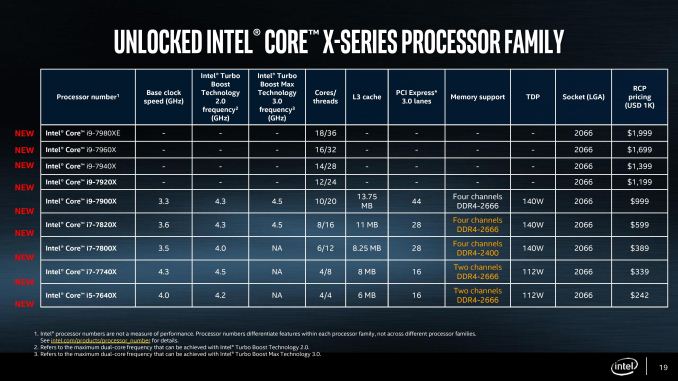

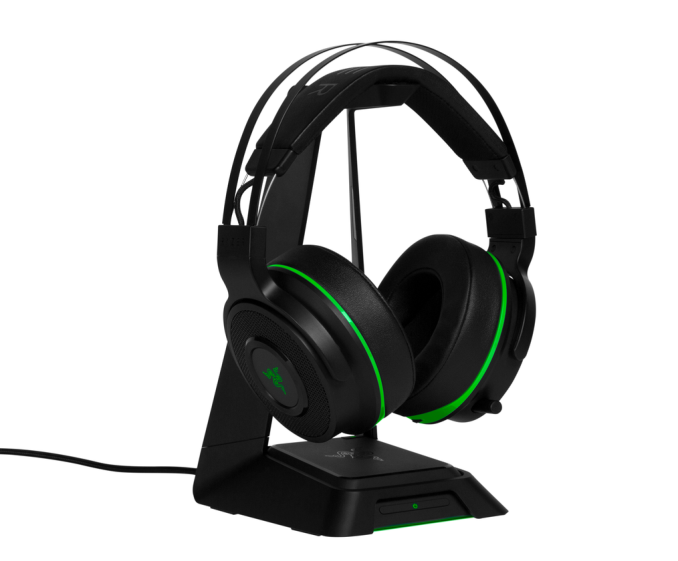
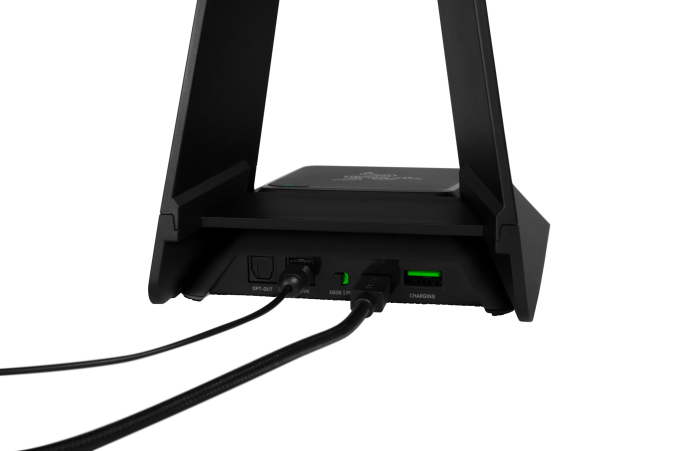
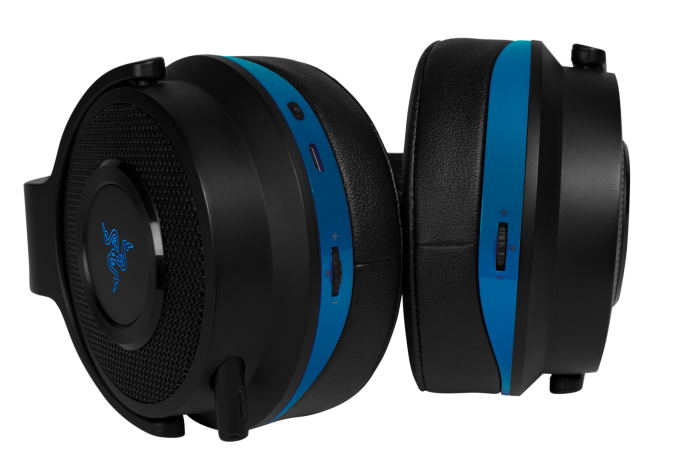
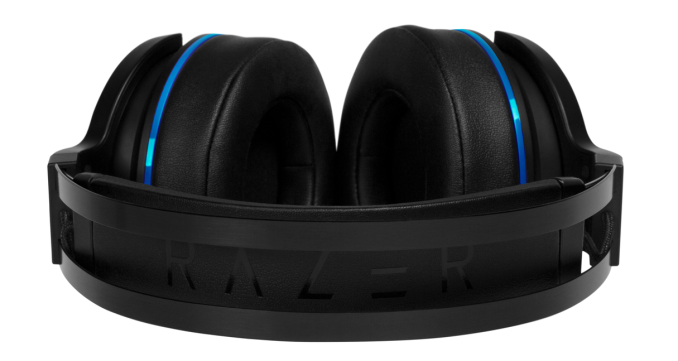
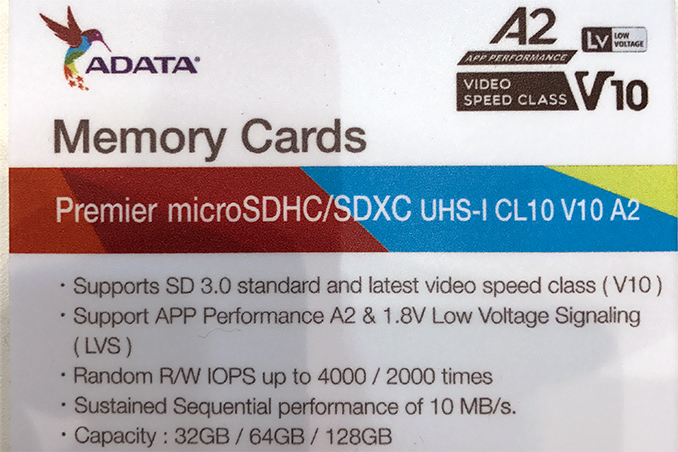
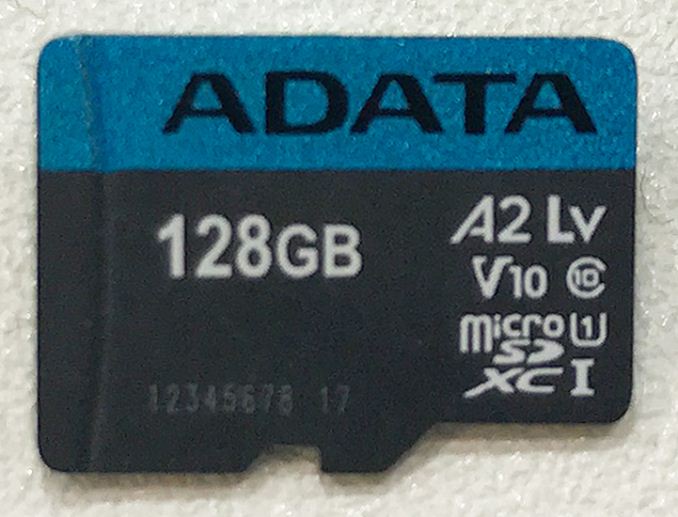
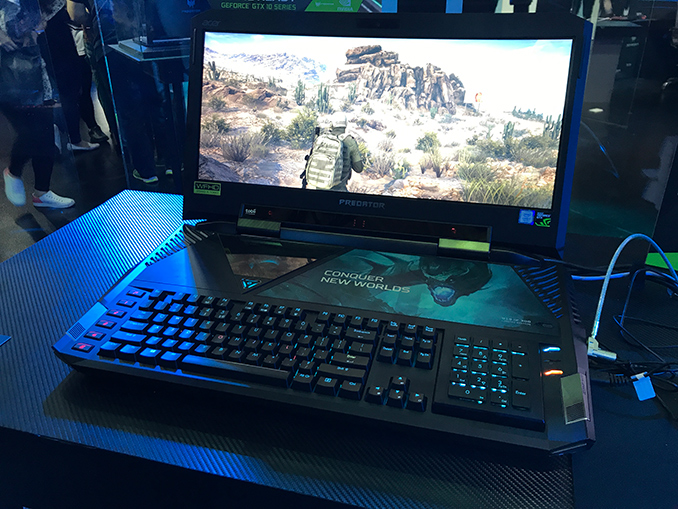



















Bookmarks